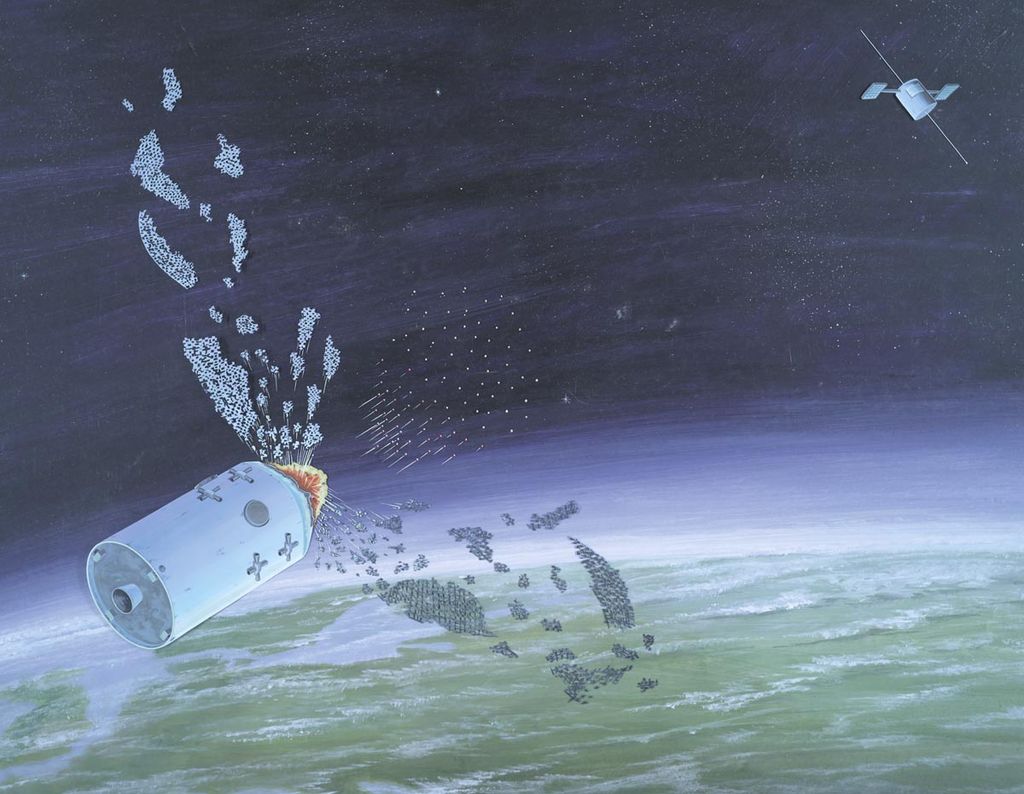Top US Strategic and Space Command officials have informed lawmakers that China is rapidly advancing in space technology and bolstering its nuclear capabilities.
During a recent hearing with the US Senate Armed Services Committee, General Stephen Whiting, the head of US Space Command, delivered a stark assessment of China and Russia’s rapid progress in developing counter-space weapons.
He emphasized the growing vulnerability of US forces, which rely on space assets for communication, navigation, and surveillance.
“China is growing its military space and counter space capabilities at breathtaking pace to deny American and allied space capabilities when they so choose,” he said.
He added that there was an urgent need for the US military to adapt its systems to confront emerging threats, highlighting the outdated nature of current architecture in the face of evolving challenges in space.

While General Whiting refrained from directly addressing Russia’s reported development of a nuclear anti-satellite weapon, he indirectly tackled concerns about its strategic implications.
He noted that Russia’s military operations were less reliant on space assets compared to the United States, citing its preference for terrestrial communication infrastructure. On the other hand, the General mentioned that China was increasing its dependence on space assets and its strategic calculus in the Pacific region.
He suggested that China’s pursuit of space capabilities was closely linked to its efforts to assert dominance in the first and second island chains, underscoring the strategic importance of space in contemporary geopolitics.
Whiting pointed out that China frequently concealed its intentions by leveraging dual-use technologies, academic initiatives with unclear research objectives, and commercial ventures that have the potential to bolster military capabilities.
Whiting further noted that what was most troubling about China’s heightened focus on space weaponry was its meticulous examination of the United States and its reliance on space assets.
He said that China’s rapid development in space programs was designed to threaten the United States’ satellite infrastructure.
China’s Growing Nuclear Capabilities
The commander of the US Strategic Command informed Congress about China’s relentless pace in developing nuclear weapons delivery systems, indicating a departure from its strategy of minimum deterrence.
Air Force Gen. Anthony J. Cotton, speaking before the Senate Armed Services Committee, expressed deep concern over the speed of China’s nuclear force expansion in recent years, admitting that it keeps him awake at night.
“For me, it’s [China’s] capacity, capability to build out their weapons systems, their arsenal,” Gen. Cotton said. “It’s that simple.”
He warned that Chinese military leaders were accelerating the deployment of nuclear forces, including significant increases in land-based missiles, missile-firing submarines, and a new bomber capable of launching a nuclear-tipped ballistic missile.
In his prepared testimony, the commander highlighted the rising risks of nuclear conflict due to strategic collaboration between China and other US adversaries, particularly Russia, North Korea, and Iran.
Notably, Gen. Cotton mentioned that Chinese and Russian nuclear bombers had recently conducted joint patrols, signaling a potential alignment of their nuclear capabilities.
During the hearing, Sen. Tom Cotton, a Republican from Arkansas, revealed that China’s nuclear arsenal had more than doubled since President Xi Jinping took office in 2012, with Pentagon estimates projecting a fivefold increase in the future.
China’s nuclear arsenal, encompassing land, air, and sea-based platforms, now includes H-6 bombers, a newly developed H-20 stealth bomber, and six missile submarines armed with advanced JL-3 missiles capable of reaching the continental United States from littoral waters.
Despite maintaining a smaller nuclear arsenal historically, China is rapidly expanding its nuclear capabilities, with reports suggesting that the People’s Liberation Army Rocket Force’s (PLARF) nuclear warhead stockpile could reach 1,000 by 2030 and possibly 1,500 by 2035.
These warheads are expected to be deployed at higher readiness levels, with many deployed on systems capable of targeting the continental United States.
The Bulletin of the Atomic Scientists estimates China’s current nuclear warhead count at 438, with an additional 62 warheads produced but not yet operationalized – a figure consistent with the Pentagon’s earlier assessment.
The growing sophistication and scale of China’s nuclear capabilities present a significant concern on the global stage, raising questions about the future balance of power and strategic stability.
- Contact the author at ashishmichel(at)gmail.com
- Follow EurAsian Times on Google News